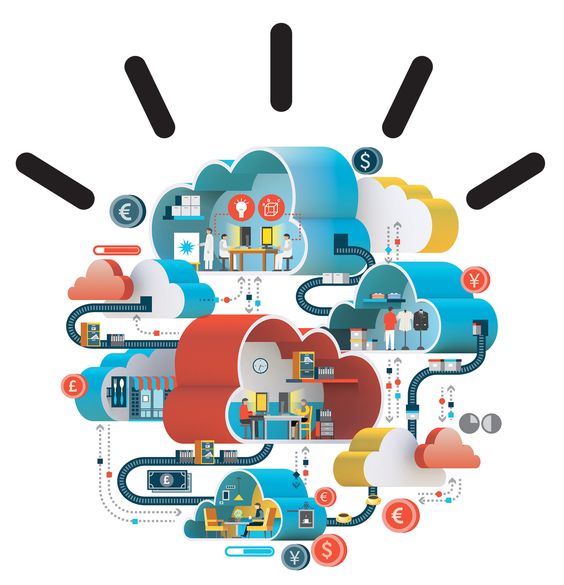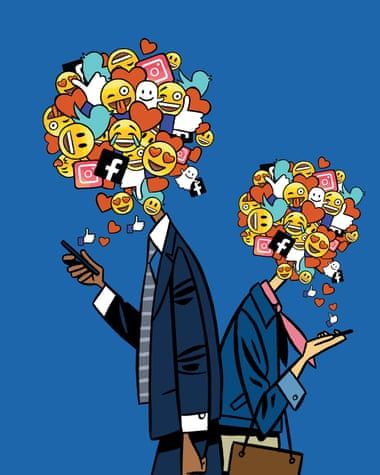#PostCovid Imagining the Future
Which future to invest in? Try to imagine.

The potential impact of the ongoing crisis triggered by Covid-19 is still far from clear. Just imagine how little clarity there can be on how to deal with its consequences.
First, governments and international institutions appear visibly struggling to identify and implement effective interventions to counter this crisis.
A crisis of such magnitude, both health-wise and economically, hasn't been seen since World War II.
So, the current efforts of governments and institutions are heroic. But the good news is that they aren't starting from scratch. Past crises always serve as a valid guide (at least in part) for addressing new ones, including this one.
Whether it involves financial crises, environmental crises, or previous epidemics, the actions of previous governments represent solid foundations for those that follow.
They provide excellent benchmarks to guide current leaders in choosing areas for intervention and the tools to deploy.
Because while it is certainly true that every crisis is different from the others, some rules of the game remain valid yesterday as they do today:
- Employment must be supported to avoid the collapse of demand;
- The most vulnerable classes must be assisted to prevent social unrest;
- Structural investments must be strengthened to make critical services more accessible.
These interventions are the evergreen strategies of economic policy, falling under what is generally referred to in social and economic sciences as the so-called Welfare.
They aim to assist and support citizens. The people. And indirectly to ease the burden on businesses (consider, for example, redundancy funds).
Because the primary concern, regardless of the crisis at hand, is the protection of the health and well-being of citizens.
And this has also been the case during the crisis we are experiencing, with the added complication that this current situation is a pandemic crisis.
A virus that first infected people and then the economy.
Having passed what seems to be the most "acute" phase of infections and deaths, the economy is now the concern weighing on the minds of governments, citizens, and businesses alike.
Modern economics is a relatively young and wonderfully complex science.
A science that does not exist in isolation but expands and merges with social sciences as well as mathematical and statistical sciences. Continuously evolving and expanding, it permeates, one could say, every aspect of our daily lives.
And it falls to entrepreneurs, the good souls of our country, to wield and apply this science and its principles within their productive and business realities.
SEntrepreneurs need a crystal ball today.
Because unlike political decision makers, entrepreneurs cannot look to the past when they think in terms of interventions and investments.
If anything, they look at the bottom line (although many would do without today).Their gaze is always turned to the future.
That future into which they project their investment choices, all intent on understanding How to make sure that blessed ROI continues to be positive also in the near future.

But what future?
Here's the point. We no longer have certainties about what the future may hold. Which changes we are experiencing will be temporary, and which will be permanent?
In physics, if you stretch a rubber band, you can be sure that once the tension is released, the rubber band will return to its original position. In economics, however, it doesn’t work that way.
In economic sciences, the phenomenon called "hysteresis" refers to how an event occurring today affects the economic trajectory of the future.
The Covid-19 pandemic has certainly produced hysteresis effects. But in what way? Some of the damage caused by this crisis will be reversible. Others will not, for better or worse.
Many sectors and activities have been hard hit by this crisis.
Let’s first think about the tourism and transportation sectors, which, by their nature, had to shut down for months during the lockdown and restrictions on travel.
For airlines around the world, this crisis has resulted in accumulated debts that have reached – according to some estimates – $550 billion (an amount equivalent to 92% of the sector's revenue).
However, we know that these downturns, while frightening, will largely be gradually absorbed when travel resumes. Because we will travel again, that is certain.
For other sectors, however, the outlook is much less clear.
Consider the fashion sector and retail outlets. This crisis has been catastrophic, with projections for the closure of 17,000 stores in our country alone.
The extent to which this crisis will be reversible in this sector is still not well understood. Perhaps not very much. Because working against it is the booming e-commerce sector.
Whether due to the pandemic accelerating online shopping or the increasing popularity of e-commerce for its convenience, simplicity, price advantages, and time savings, it’s evident that e-commerce would have largely supplanted physical stores in the near future. But the pandemic has rapidly accelerated this process, causing stores to suffer for far too long. And their future appears increasingly uncertain.
In addition to the uncertainties regarding the sectoral repercussions of this crisis, the scenarios for recovery remain mysterious.
What will the path to recovery look like?
As we've already mentioned, the only real certainty we have, for now, is uncertainty.
We are almost getting used to thinking day-by-day, step-by-step.
Necessity makes virtue. With a virus that mutates every quarter, vaccines that still struggle to arrive, and funds and resources with uncertain outcomes.
However, we have learned something in these months. We have gained experience, on our own skin. Therefore, we must try to make the most of this experience by drawing some useful insights from it.
Let’s approach the analysis with what has been the experience that has affected us all the most: social distancing.
Lockdown, restrictions on movement, smart working.
Due to emergency measures imposed initially and later by choice, in recent months we have spent most of our time immersed in the other world, the virtual and connected one, where we have been able to observe its infinite functionalities and potential.
Before Covid-19, for many of us, “Cloud” was known, of course, but relatively uninteresting.
A resource that seemed mostly distant from our private and daily lives, relegated to mainly work-related issues.
After spending days, weeks, and months using the tools that the Cloud had to offer us through the web, we discovered instead that it is a wonderful and vast space, a second home, that digital one, which houses our photos, videos, files, data, and more.
Accessing online content, available through cloud applications, has allowed us to hold video conferences, chat, share our snapshots and thoughts on social media, and access movies and music entirely via streaming.

Online Traffic (which has been the only “traffic” allowed for months) has soared, and thereafter the following have been created prosperous opportunities for those player which around the Cloud have built their value proposition.
Just to mention two Cloud platforms that became giants just in the Covid-19 era:
We also realized, again on our own skin, the growing role that the state, through economic policy instruments, has taken on in the social and economic system.
Intervention tools that are now indispensable in modern societies and economies.
Governments have played the role of insurer and investor. Debts
public have risen to meet the financial needs of
civil societies and economic systems.
The inference of politics in economics is a phenomenon that seems unstoppable.
Because while it is true that Covid-19 hit everyone, without distinction and discrimination - the rich as well as the poor - As for the effects He provoked, has not been as fair.
Social inequalities are increasing more and more, gaps are becoming chasms. Disparities Between those who own more and those who own less are becoming more acute and are taking on such dimensions that they seem almost irreversible.They are exacerbating
What is mine (and yours) is ours.
Growing need for socialism, sharing, assistance.
And if we think about it for a second, the trend of the technologies we mentioned earlier, the ratio of the Cloud and “open”digital services perfectly embrace these emerging social needs.
The Cloud allows us to have access to the content and tools we need, without becoming their owners. And on par, the Sharing Economy allows us to enjoy certain goods without owning them.
And if the pre-crisis Sharing Economy was already experiencing a golden age (think of companies like Uber, Airbnb, Car2Go), in the near future we expect that this phenomenon of “what's mine (and yours) is ours” will continue to expand more and more, permeating new aspects of our lives.
A growing need for sharing then, for access rather than ownership, fueled and supported (not surprisingly) by increasingly enabling, high-performance, and widespread technologies.
The increasingly thin line between society and social.
Forced social distancing has in fact produced an improbable mass of digital content.
During the lockdown online traffic doubled in our country, so much so that we wondered if our infrastructure would hold up to those steadily increasing volumes. Traffic that mostly focused on social networking and messaging platforms.
Content that is no longer consumed, but self-produced. This crisis in fact has accelerated that revolution in the digital world in which people are increasingly the protagonists of the content that travels on the net.
We produce videos, images, articles and thoughts. We share them in exchange for gratification, recognition. We exchange them in exchange for content posted by other users.
Our appetite for Social during Covid-19 became almost insatiable. It goes without saying, as we found ourselves housebound and satisfied our lack of human contact, information and entertainment, with tech platforms.
Half of the humans on the planet are also social users.
A power, that of social networks, which also manages to direct our consumer choices and political opinions.
Political representatives now conduct their election campaigns more on Twitter than in the public square.
Consumers listen more to Influencers on Instagram than to commercials on television.

What will be normal ... next? All the phenomena that we have mentioned and that have strongly characterized our economic and social fabric during this crisis, did not originate with Covid-19.
Come to think of it, the main effect we suffered was basically their sudden acceleration.
It was like observing a learning curve that instead of following its natural trend of gradual and steady growth, soared at three times the speed.
A crisis not groundbreaking in itself then. But the different daily routine and the changes in our habits that it has forced us to adopt will most likely be permanent.
It is not time to react, but to reinvent.
Like it or not we must adapt, not react, to the changes that have been produced by this crisis. But this necessary adaptation can only guarantee our survival today, not tomorrow.
Exceptional circumstances call for exceptional interventions. In politics as well as in business.
The future is so uncertain, for everyone, that companies are the ones who have to imagine and create it for their customers.
Companies that have that right “appetite” for risk and the courage to invent and develop new goods and services can literally shape the new industries of tomorrow.
This is the time to harness as much leadership and creative force as you have. The citizens, the customers, have no certainty about the future.
Today more than ever they are extremely receptive, ready to be guided by those businesses that will have a solid and innovative vision of the future. It is vision that moves and inspires people, promises a future.
Starting from the identification of those phenomena that have become acute in this period, we should imagine conducting a kind of SEO analysis, identifying those “keywords” that represent the needs, desires, habits of the post-covid society.
As per the economics textbook, once we investigate these keywords, we will have to imagine a value proposition that can intercept these expressed and unmet needs.
Today more than ever, imagination is needed. Companies need to be Leaders of the future that will be and that will be all to be created.
In this digital age, teeming with innovative and accessible technologies, there is no shortage of tools to imagine the business of the future you want.
The Cloud has made possible the development of innovative tools and technologies with infinite potential and applications: Big Data, Artificial Intelligence, Augmented Reality, Blockchain, Robotics, 3D Printers...Don't look for solutions. Just imagine them.


